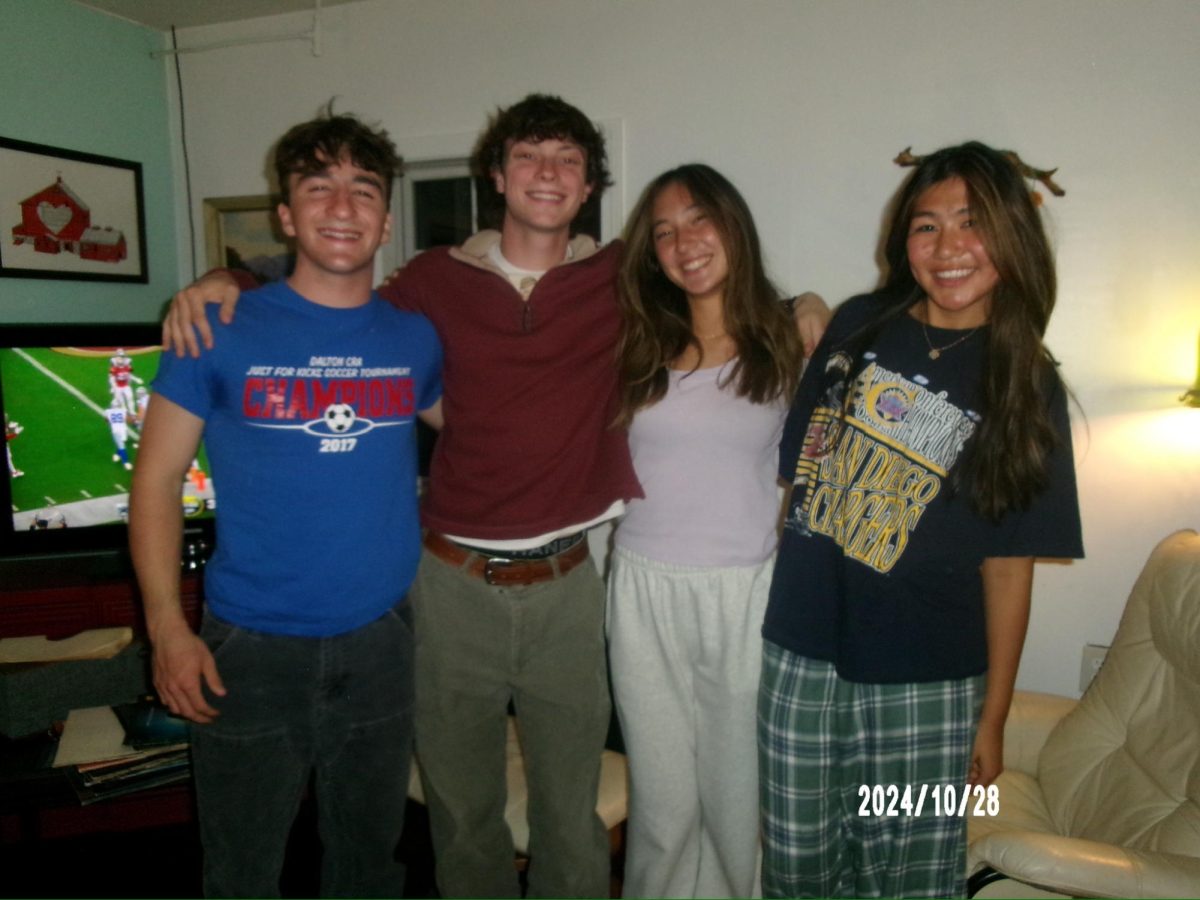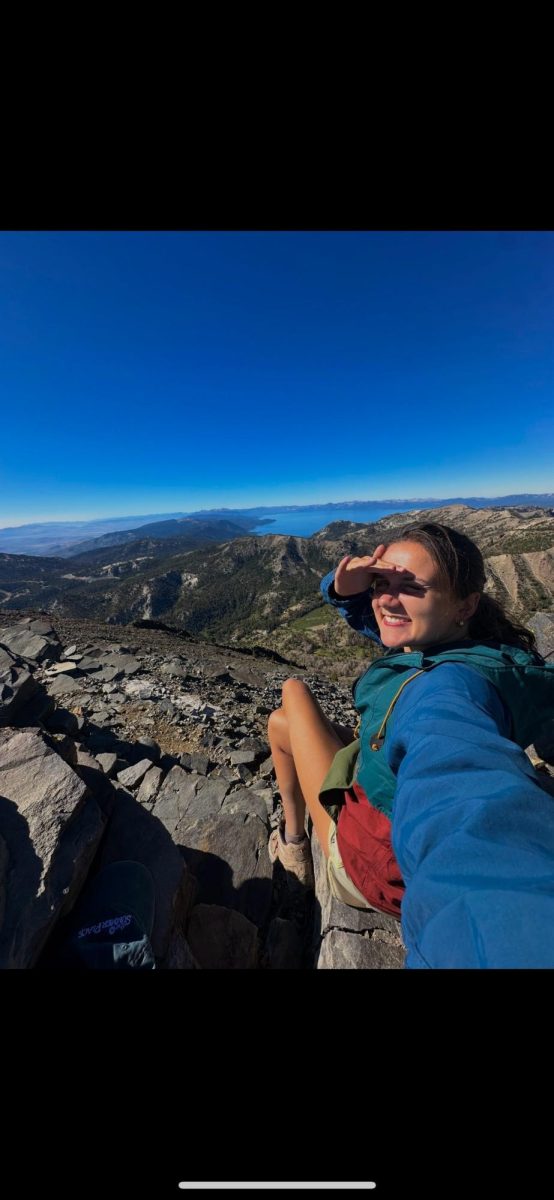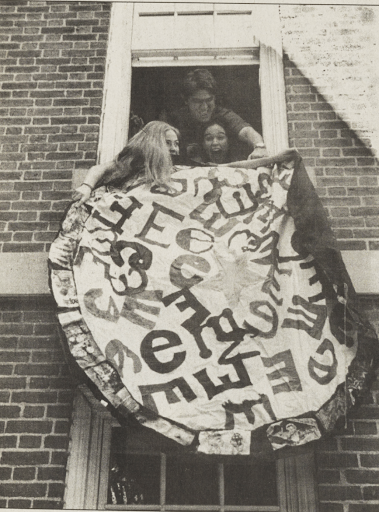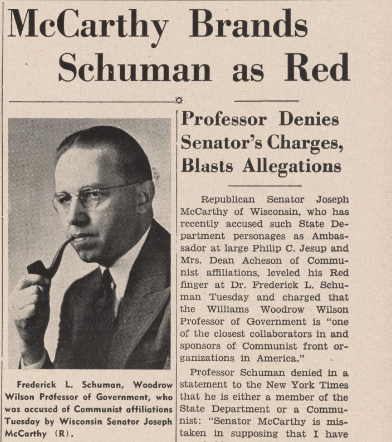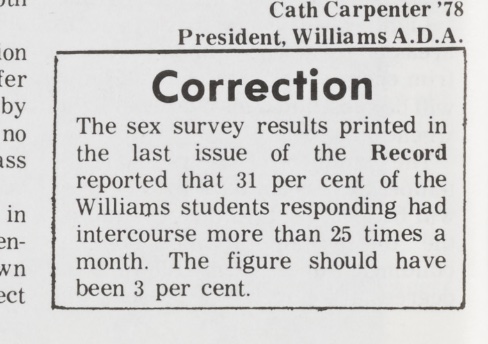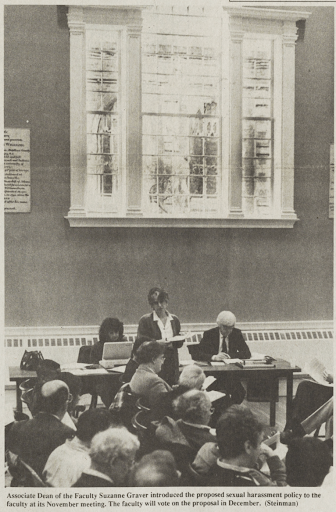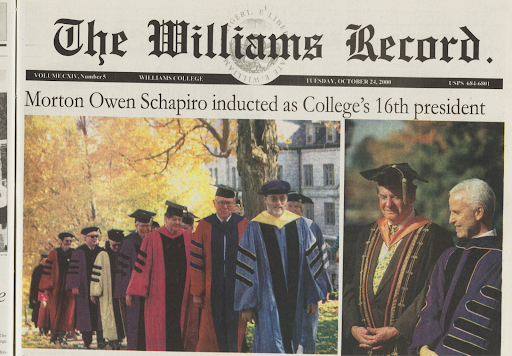“This Week in Williams History” is a column that looks back at memorable moments in the College’s past through articles in the Record. This week in history, the Record reported on the celebration and grief that followed the presidential elections in 2000, 2008, and 2016.

2000: Students table for voter registration, recount prompts op-eds
Twenty-four years ago — days after Morton Owen Schapiro was formally inducted as the College’s 16th president — students at the College geared up to cast their ballots in the 2000 presidential election.
Starting in September, according to an article in the Oct. 10 issue of the Record, Kristin Wiklius ’01 led a volunteer voter registration campaign, tabling in Baxter Hall on Wednesdays during the lunch rush. Catheryn Christensen ’01, a volunteer, estimated that about 1,000 students successfully registered as a result of the efforts.
“Its legacy, an enthusiastic student response to political involvement, seems surprising for a campus frequently maligned in the editorial pages of this and other papers as apathetic,” the Record reported, adding that dozens of students had gathered in Goodrich Hall to watch that year’s presidential debate.
While efforts by students like Wiklius and Christensen were nonpartisan, a Oct. 24 poll conducted by the Record found that 68 percent of students supported former Vice President Al Gore, 15 percent supported former President George W. Bush, and 13 percent supported Ralph Nader — a prominent third-party challenger in 2000. Christensen told the Record that most of the students she had registered were liberals debating whether to throw their support behind Gore or Nader.
As a vote recount in Florida stretched the election into December, students shared a variety of perspectives in the opinion pages of the Record — critiquing each candidate, pontificating about the election’s results, and even lambasting the electoral system altogether. Dan Elsea ’02 argued, for instance, that the election was evidence that the Electoral College was “archaic and unfair,” while Nishant Nayyar ’02 responded that the vote-counting process had merely become a “scapegoat” for an incredibly tight election.

2008: Majority of students vote for Obama, celebrate his victory
As the 2008 presidential election neared, an overwhelming proportion of students backed former President Barack Obama: A Record poll published in the Oct. 22 issue found that, among eligible students, 87 percent intended to vote for Obama, 7 percent supported former Sen. John McCain, and the remaining 6 percent were either undecided or planned to vote for a third-party candidate.
“Most people on campus seem very excited about Obama and the election, which has been really encouraging,” Erin Samenfeld-Specht ’09, a liaison for the Williams for Obama campaign, told the Record.
On the Sunday before Election Day, three Ephs — Samenfeld-Specht, John Earle ’09, and Frank Zimmerman ’10 — organized efforts to bring 11 students to Philadelphia, where they spent several days encouraging voters to support Obama, according to an article in the Nov. 5 issue of the Record. Back on campus, on the night of the election, about 150 students gathered in Goodrich to watch the results come in. Their spirits were fueled by over $1,000 in snacks and election-related skits by the improv group Combo Za.
In one of the op-eds published in the Nov. 11 issue of the Record, Anouk Dey ’09 said the results “proved that democracy was intact.” Claire Schwartz ’10 said Election Day was “the best day of [her] life.”
“After all the screaming of ‘OBAMAAAAA’ in the middle of the night has died down, the big question buzzing in everyone’s overstuffed heads is, ‘What now?’” wrote Mo Zhu ’11 in a third op-ed. His proposed answer: Invest in local activism following what he described as a national victory.

2016: Students protest following Trump’s win
Former President Donald Trump’s victory over former Secretary of State Hillary Clinton on Nov. 8, 2016, sent shockwaves through campus.
At 2:30 a.m. on the night of the election, not long after The Associated Press called the race for Trump, several students created a Facebook event titled “Unsafe Unsound — Occupy Baxter.” Over 300 students said that they planned to attend, according to an article in the Nov. 16 issue of the Record. The next day, from 9 a.m. to 4 p.m., students gathered in Baxter to share their thoughts at an open-mic event.
“Being in Baxter on Wednesday was really tiring, but listening and talking, in a way, was cathartic,” Suiyi Tang ’19, an organizer of the event, told the Record.
Under pressure from students to cancel classes, then-President of the College Adam Falk emailed faculty, encouraging them to be “flexible and sensitive” to the impact the election might have had on their students — though he did not officially cancel classes. In an all-campus email, Falk acknowledged the “threatening and destructive” rhetoric of what he called “the most divisive American presidential campaign in recent memory.”
“I’m inspired by the ways I see our community already seeking to unite this morning, and I’m reminded once more of the fundamental relevance of a Williams education,” Falk wrote.
In a Record op-ed published on Nov. 16, however, Matthew Quinn ’17 criticized the administration’s reaction for what he perceived as its political slant. “Safe spaces were immediately declared and all-campus emails were sent out, making it seem like the College administration favored Clinton’s candidacy,” he wrote. “If Clinton had won, I don’t believe that there would be anyone at Williams thinking that we should get campus-wide emails, even with pressure from students, about how ‘frightened’ we all are.”
On Nov. 12, over 400 community members gathered at a “Stand Up to Trump” rally at Field Park. Attendees marched down Spring Street, holding signs that said “Not Our President” and “We Will Fight,” among others that protested Trump’s Election Day win.
Separately on that morning, two students vandalized Griffin Hall’s main stairwell with a wood stain resembling blood and the message “AMKKK KILL.” Following an investigation by the Williamstown Police Department and Campus Safety Services, two students admitted to the vandalism and said that their message was not intended to threaten community members but rather to bring attention to the effects of the presidential election on the College community and the racism present within American society, according to an all-campus email from Falk.
On Nov. 18, over 300 students gathered on the steps of the Paresky Center and marched to Hopkins Hall, urging Falk to declare the College a “sanctuary campus,” according to an article in the Dec. 7 issue of the Record. Over 170 faculty and staff also signed a petition with a similar demand — which several professors described to the Record as a commitment to “doing whatever we can to fend off threats to our principles, practices and most vulnerable community members, including students, staff, and faculty.”
In an all-campus email sent the day before the walkout, Falk acknowledged the calls from the community, affirming that the College would “do all we can to protect and support our undocumented students.” He declined, however, to declare the College a “sanctuary campus” over concerns about how such a move might “inadvertently harm our undocumented students” by making the College a potential target for the incoming Trump administration.
On Nov. 29, College Council — the College’s form of student governance before the establishment of the Three Pillars — passed a resolution titled “A Resolution in Support of Undocumented Students on Campus,” which stated that the body “respectfully stands to ensure the continual support of all current and future Williams students and their right to access a Williams education.”
“In light of the recent presidential election, we felt it was important that we as a community reaffirm our support for undocumented students,” two of the statement’s co-authors, Tang and Lizzy Hibbard ’19, wrote to the Record.




